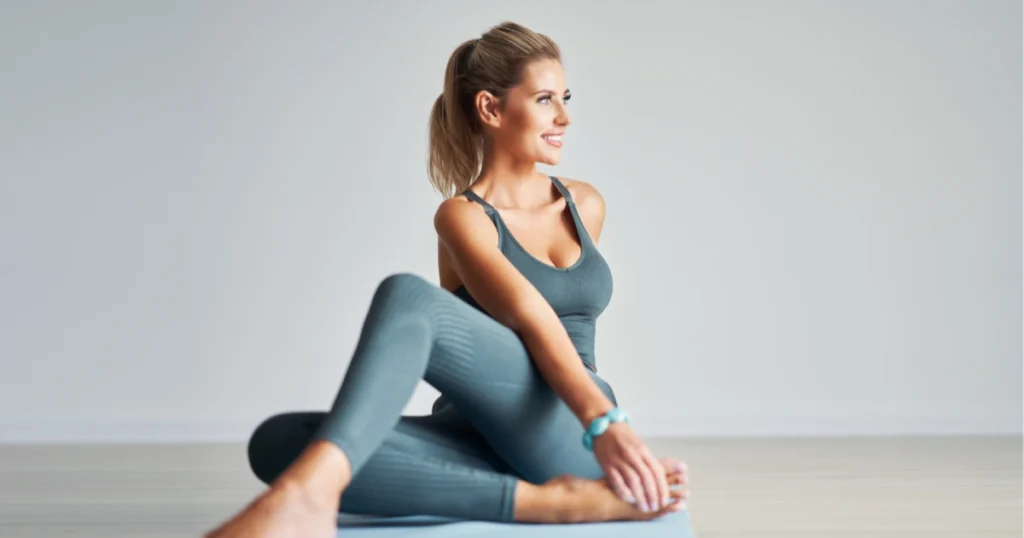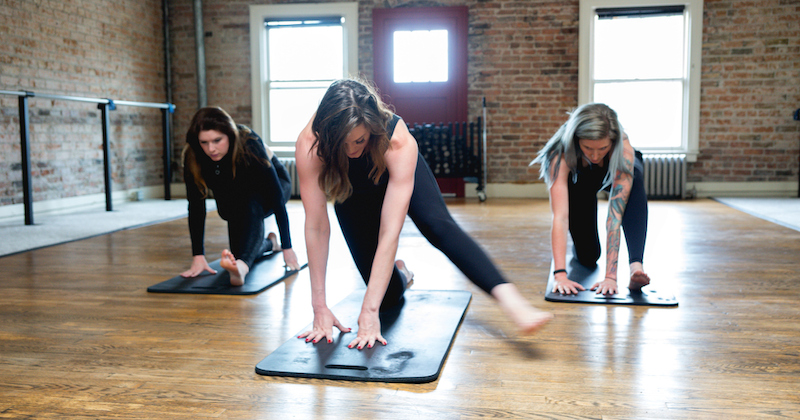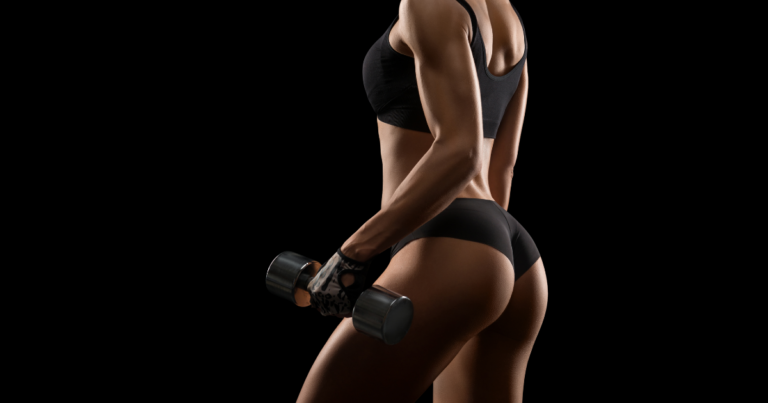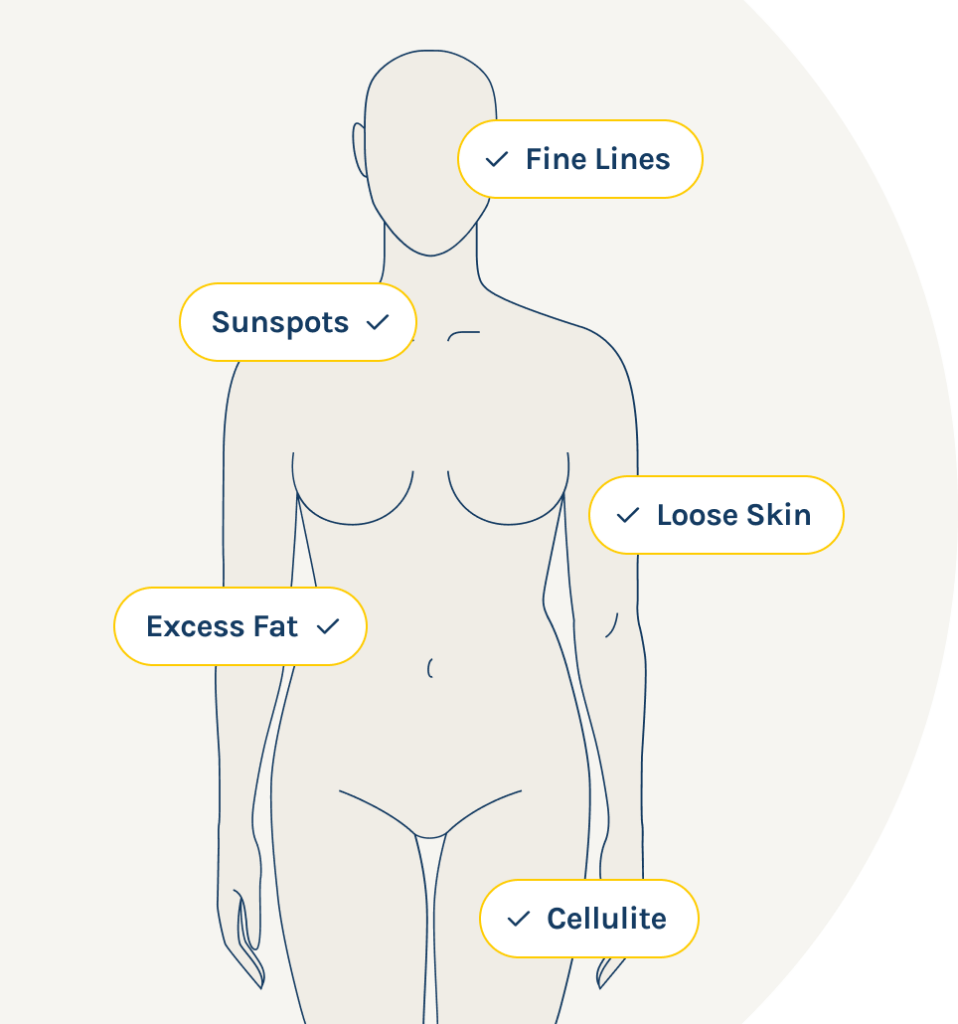
Pilates and Yoga are two popular forms of exercise that improve flexibility, strength, and overall health and well-being. While they may seem similar, these two workouts have several key differences.
Pilates focuses on core strength, posture, and control, making it great for physical fitness and rehabilitation. On the other hand, Yoga encompasses physical, mental, and spiritual aspects, emphasizing flexibility, mindfulness, and overall well-being.
Ultimately, the decision to pursue the precision of Pilates as opposed to the holistic approach of Yoga depends on personal preferences and fitness goals. Incorporating either exercise leads to a healthier and more balanced lifestyle.
Wondering about the differences between Pilates and Yoga? Keep reading to discover what these two tried and true workout routines have in common and what sets them apart from each other.
What Are The Benefits of Pilates?
Pilates offers numerous benefits for individuals. Let’s explore the various benefits it provides:
Enhances core strength
Improves your posture, balance, and overall body alignment
Promotes flexibility
Offers different styles and classes such as Barre, Reformer and Cadillac
Prevents injuries and muscle strains
Improves muscle tone and strength
Increases muscular endurance and overall strength
Enhances body awareness
Aids in developing a balanced physique
Improves mental well-being and helps reduce stress and anxiety
Can be modified to accommodate all fitness levels
By incorporating Pilates into your routine, you experience these advantages and enhance your overall health and well-being.
Understanding Pilates
Joseph Pilates developed Pilates in the early 20th century. He believed that poor health was due to a sedentary lifestyle, poor posture, and improper breathing. Therefore, Pilates created a series of controlled movements. These low impact exercises focus on strengthening the core muscles and improving balance and flexibility. As a result, Pilates strengthens the muscles and increases coordination. It is also ideal for reducing stress and anxiety and improving posture. Pilates is easy on the joints and is done by people of all different fitness levels.
There are various types of Pilates classes and styles to choose from, each offering unique benefits. Popular Pilates classes include Mat Pilates, Reformer Pilates, and Power Pilates. Mat Pilates is a popular form of Pilates that is conducted on the floor using a thick exercise mat. These classes primarily rely on bodyweight exercises and incorporate movements that challenge your core and improve flexibility. Reformer Pilates is another common style of Pilates that utilizes a special machine called a reformer, which features a gliding carriage and adjustable springs that provide resistance. Power Pilates classes incorporate a faster-paced, more dynamic approach to Pilates. These classes focus on increasing cardiovascular endurance, strength, and flexibility. Power Pilates is suitable for those looking for a more intense workout and offers numerous variations and modifications for all fitness levels.
Cadillac Pilates and Barre Pilates are additional styles available. Cadillac Pilates classes involve the usage of a large equipment piece known as the Cadillac. It consists of a bed-like frame with bars and straps attached. Cadillac exercises are excellent for increasing core strength, flexibility, and improving body control. Barre Pilates classes combine traditional Pilates exercises with ballet-inspired moves, usually using a ballet barre for support. This Pilates style aims to strengthen and tone the entire body, with a particular emphasis on the legs, glutes, and core muscles.
What Are The Benefits of Yoga?
Yoga offers a multitude of benefits for both our physical and mental well-being. Here are some of the key advantages of practicing yoga:
Improves flexibility
Enhances strength and endurance
Boosts balance and stability
Promotes relaxation and stress relief
Improves sleep quality
Offers different styles and classes such as Hatha, Vinyasa, and Bikram
Increases focus and concentration
Balances emotions and uplifts mood
Boosts energy levels
Enhances cardiovascular health
Promotes better digestion
Builds self-confidence
Overall, yoga is a holistic practice that nurtures both our body and mind, promoting physical fitness, mental well-being, and a balanced lifestyle.
Understanding Yoga
Yoga is a form of exercise and meditation that helps people stay healthy and relaxed. It is a practice that has been around for thousands of years and originated in ancient India. It started as a spiritual practice originally used by religious leaders and monks. People in India began practicing it to connect their minds, bodies, and spirits. Over time, yoga became more popular and spread to different parts of the world. In the late 19th and early 20th centuries, yoga gained attention outside of India and started becoming more known in western countries.
Yoga consists of different poses, called asanas, which are designed to strengthen and stretch the body. These poses are usually combined with deep breathing and meditation techniques to help calm the mind and reduce stress. Yoga also focuses on promoting mental and emotional well-being. It helps improve flexibility, balance, and coordination. It is also known to increase strength and improve posture.
People practice yoga for various reasons, including improving overall health, reducing anxiety, and increasing relaxation. It is a versatile exercise that is modified to suit different fitness levels and abilities. Nowadays, there are many different styles of yoga, such as Hatha, Vinyasa, and Bikram.
Hatha yoga is a gentle and slow-paced practice suitable for beginners. It involves basic poses, breathing exercises, and relaxation techniques. For those seeking a challenging and dynamic experience, there’s Vinyasa Yoga. In this style, practitioners flow through sequences of poses synchronized with their breath. Vinyasa Yoga builds strength, endurance, and helps improve coordination. Bikram Yoga, also known as hot yoga, is performed in a heated room. This style consists of a set sequence of 26 poses and two breathing exercises. The heat helps increase flexibility and encourages detoxification through sweating.
Whether you are just starting out as a beginner or have been practicing for a while, yoga offers a range of benefits for both physical and mental well-being.
Pilates Vs. Yoga
While both Pilates and yoga offer various benefits, they differ in their origins, techniques, objectives, class structure, and terminology.
Firstly, the origins of Pilates and yoga differ. Pilates began in the early 20th century by German physical trainer Joseph Pilates. Pilates focuses on strengthening the core muscles and improving posture. On the other hand, yoga has ancient roots in India and incorporates physical postures, breathing exercises, and meditation to promote harmony between the mind, body, and spirit.
Secondly, the techniques used in Pilates and yoga vary. Pilates exercises involve precise movements that target specific muscle groups, emphasizing control, concentration, and breath for a total body transformation. Pilates often utilizes specialized equipment, such as a reformer, to enhance resistance and support. On the other hand, yoga involves holding various postures (asanas) for longer periods. The focus is to increase flexibility, balance, and mindfulness. Breathing techniques, like the popular “deep belly breathing,” are also integral to yoga practice.
Additionally, while both Pilates and yoga focus on body-mind connection, the overall objectives differ. Pilates primarily aims to improve core strength, balance, and posture, contributing to overall physical fitness. It is especially beneficial for athletes or individuals seeking rehabilitation from injuries. Yoga, on the other hand, encompasses a broader perspective, aiming to achieve physical, mental, and spiritual harmony. It promotes stress reduction, relaxation, and mindfulness, making it suitable for individuals seeking a holistic approach to wellness.
The class structure and pace of Pilates and yoga also varies. Pilates classes are typically more structured. They are led by an instructor who guides participants through a series of movements with a focus on precision and proper technique. Although yoga classes may also be guided, they usually offer more flexibility for individual customization. Yoga classes offer a wide variety of styles, from gentle and relaxing to fast-paced and challenging, allowing participants to choose what suits them best.
Lastly, the terminology used in Pilates and yoga differs. Pilates relies on specific terms such as “neutral spine,” “imprint,” and “pelvic tilt” to guide movements and body alignment. Yoga, on the other hand, uses Sanskrit terms for postures. Yoga practice often includes philosophical concepts such as “namaste” (a respectful greeting) or “Om” (a universal sound symbolizing spiritual awareness).
Whether you prefer the precision of Pilates or the holistic approach of yoga, incorporating either leads to a healthier and more balanced lifestyle.
Try Pilates Classes in Alexandria, VA
If you desire a sculpted, toned physique and are ready to spice up your workouts and try something new, Pilates is a great way to grow stronger and create the body you desire. Learn more about how Pilates defines your figure and boosts your overall fitness level by reaching out to sculp’d. We are one of the most in demand pilates and muscle building studios in Alexandria, Virginia.
Reach out to us at (703) 567-4442 to learn more about the classes we offer or visit us online to learn more. Speak with one of our experienced Pilates instructors about the range of unique services we offer at our studio that strengthen your mind, body, and overall well-being. We can’t wait to be a part of your total body transformation.



